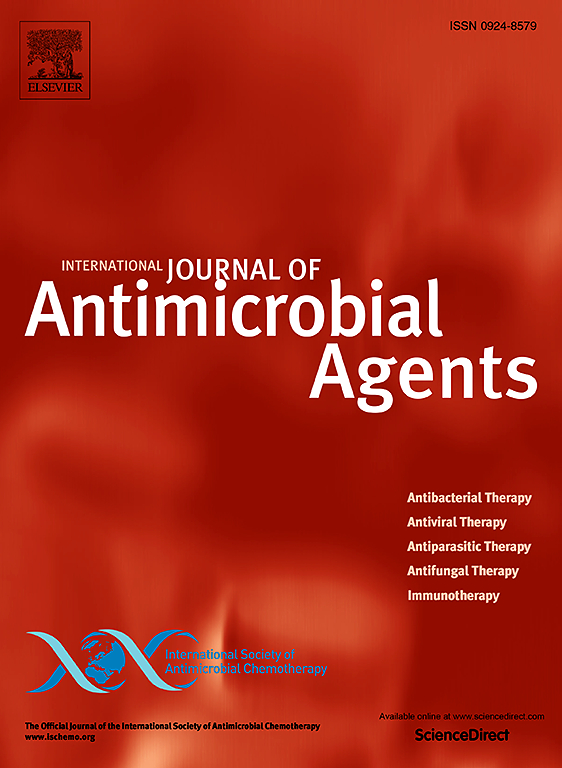Global burden of antimicrobial resistance in lower respiratory infections in 2021: A systematic analysis
IF 4.9
2区 医学
Q1 INFECTIOUS DISEASES
International Journal of Antimicrobial Agents
Pub Date : 2025-02-01
DOI:10.1016/j.ijantimicag.2024.107431
引用次数: 0
Abstract
Objectives
The research aimed to provide a worldwide evaluation of antimicrobial resistance (AMR), focusing specifically on AMR related to lower respiratory infections (LRI).
Methods
The data were derived from the Global Antimicrobial Resistance Burden 2021 (GARB 2021). Two counterfactuals were utilized to estimate the deaths attributable to AMR and the deaths associated with AMR. The primary estimation process involved various statistical methodologies, including polynomial estimation and ensemble spatiotemporal Gaussian regression models. Using the DisMod-MR 2.1 modeling framework, the incidence and prevalence of LRI were estimated, the mortality rates were subsequently calculated, and stratified by pathogens, regions, and age groups. In addition, these indexes were identified and visualized to present global burden of AMR.
Results
In 2021, there were 20.89 (95% uncertain interval: 18.27–23.50) deaths per 100 000 individuals associated with AMR in LRI, and 5.05 (95% UI: 4.29–5.51) deaths per 100 000 individuals attributable to AMR in LRI. Trimethoprim-sulfamethoxazole-resistant S. pneumoniae exhibited the highest mortality rate of 5.15 (95% UI: 3.96- 6.34) deaths per 100 000 individuals associated with AMR, while Carbapenem -resistant S. pneumoniae exhibited the highest mortality rate of 0.66 (95% UI: 0.45–0.86) deaths per 100 000 individuals attributable to AMR. S. pneumoniae exhibited the greatest burden of AMR, followed by S. aureus. Central Sub-Saharan Africa had the highest AMR burden, with mortality rates of 73.75 (95% UI: 56.61–90.89) deaths per 100 000 individuals associated with AMR and 17.73 (95% UI: 12.71–2.74) deaths per 100 000 individuals attributable to AMR, followed by Eastern Sub-Saharan Africa and Western Sub-Saharan Africa. The individuals aged under 5 and over 65 years exhibited high prevalence of antibiotic resistance especially to Carbapenems, Methicillin, and Fluoroquinolones.
Conclusion
AMR in the LRI is still a pressing global health issue, particularly in developing countries and neonatal age groups. Global interventions need to be taken to reduce the prevalence of AMR.
2021年全球下呼吸道感染抗微生物药物耐药性负担:系统分析。
目的:本研究旨在对全球范围内的抗生素耐药性(AMR)进行评估,重点关注与下呼吸道感染(LRI)相关的抗生素耐药性(AMR)。方法:数据来源于全球抗微生物药物耐药性负担2021 (GARB 2021)。利用两个反事实来估计抗菌素耐药性导致的死亡和与抗菌素耐药性相关的死亡。初步估计过程涉及多种统计方法,包括多项式估计和集合时空高斯回归模型。使用dismod - mr2.1建模框架,估计LRI的发病率和患病率,随后计算死亡率,并按病原体、地区和年龄组分层。此外,对这些指标进行了识别和可视化,以显示AMR的全球负担。结果:2021年,每10万人中有20.89人(95%不确定区间:18.27-23.50)死于LRI的AMR,每10万人中有5.05人(95%不确定区间:4.29-5.51)死于LRI的AMR。甲氧苄啶-磺胺甲恶唑耐药肺炎链球菌的死亡率最高,为5.15 (95% UI: 3.96 ~ 6.34) / 10万例,而碳青霉烯耐药肺炎链球菌的死亡率最高,为0.66 (95% UI: 0.45 ~ 0.86) / 10万例。造成AMR负担最大的是肺炎链球菌,其次是金黄色葡萄球菌。撒哈拉以南非洲中部的抗菌素耐药性负担最高,与抗菌素耐药性相关的死亡率为每10万人73.75人(95% UI: 56.61-90.89),与抗菌素耐药性相关的死亡率为每10万人17.73人(95% UI: 12.71-22.74),其次是撒哈拉以南非洲东部和撒哈拉以南非洲西部。年龄在5岁以下和65岁以上的个体表现出较高的抗生素耐药性,特别是碳青霉烯类、甲氧西林和氟喹诺酮类药物。结论:LRI的抗菌素耐药性仍然是一个紧迫的全球卫生问题,特别是在发展中国家和新生儿年龄组。需要采取全球干预措施,以减少抗生素耐药性的流行。
本文章由计算机程序翻译,如有差异,请以英文原文为准。
求助全文
约1分钟内获得全文
求助全文
来源期刊
CiteScore
21.60
自引率
0.90%
发文量
176
审稿时长
36 days
期刊介绍:
The International Journal of Antimicrobial Agents is a peer-reviewed publication offering comprehensive and current reference information on the physical, pharmacological, in vitro, and clinical properties of individual antimicrobial agents, covering antiviral, antiparasitic, antibacterial, and antifungal agents. The journal not only communicates new trends and developments through authoritative review articles but also addresses the critical issue of antimicrobial resistance, both in hospital and community settings. Published content includes solicited reviews by leading experts and high-quality original research papers in the specified fields.

 求助内容:
求助内容: 应助结果提醒方式:
应助结果提醒方式:


